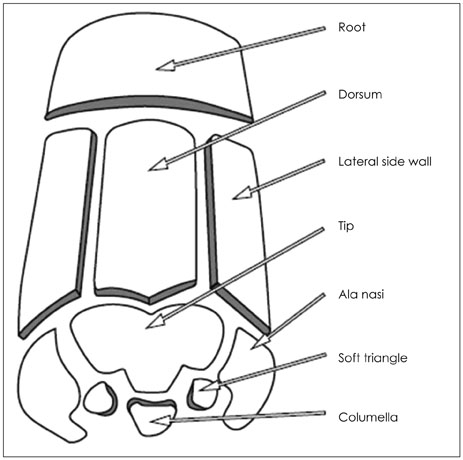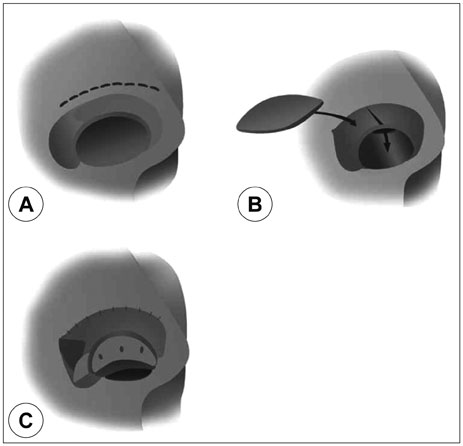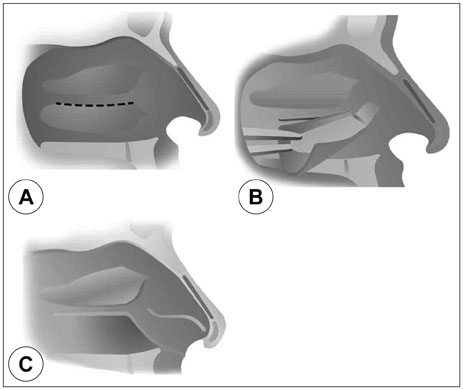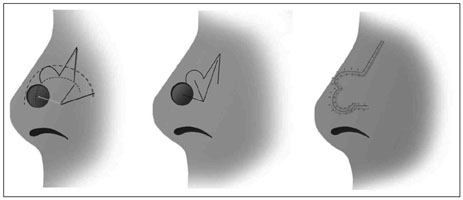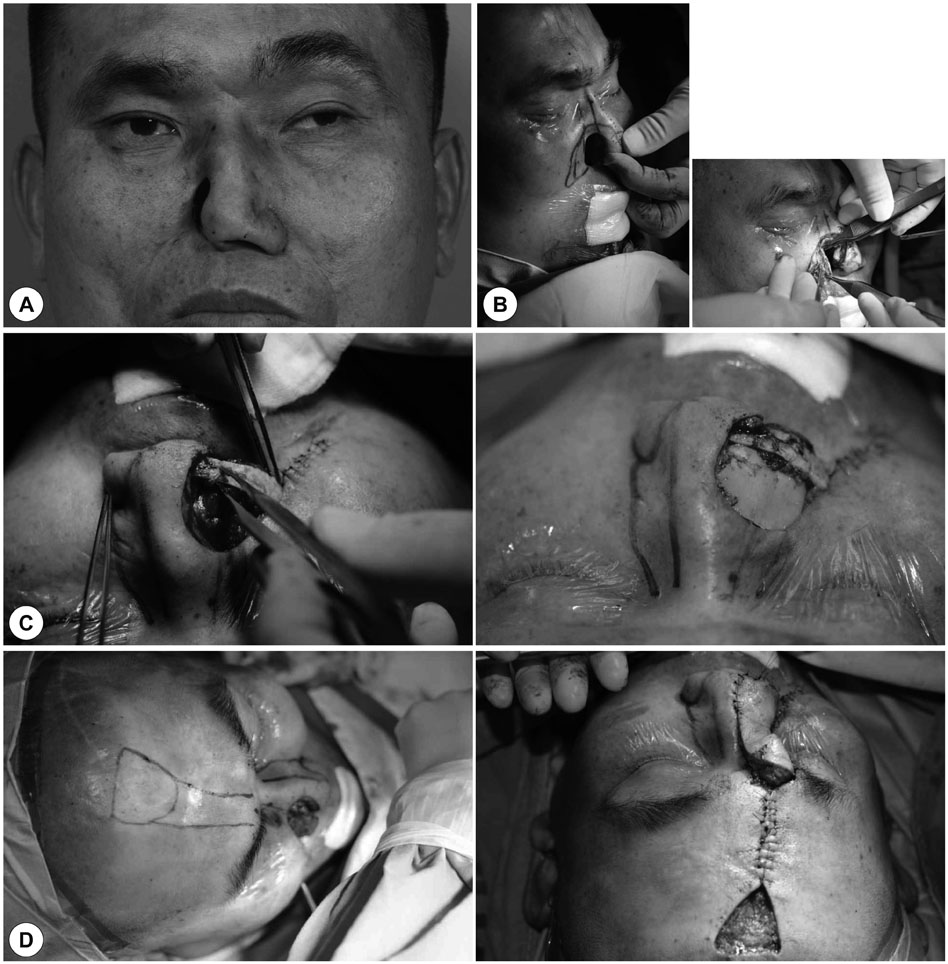J Rhinol.
2017 Nov;24(2):65-73. 10.18787/jr.2017.24.2.65.
Surgical Reconstruction of Nasal Alar Deformities
- Affiliations
-
- 1Department of Dermatology, School of Medicine, Chosun University, Gwangju, Korea.
- 2Department of Otorhinolaryngology-Head and Neck Surgery, School of Medicine, Chosun University, Gwangju, Korea. happyent@naver.com
- KMID: 2398823
- DOI: http://doi.org/10.18787/jr.2017.24.2.65
Abstract
- Reconstruction of the nasal alar may be challenging due to the complex nature of multiple cosmetic units and functional considerations, including maintenance of valvular competency. Reconstructive options include various flaps or graft repairs, depending on the subunit involvement and the size of the defect. Linear closures may be suitable for small defects, while bilobed flaps, melolabial flaps, and forehead flaps may be considered for moderate to large defects involving partial and full-thickness defects of the ala.
MeSH Terms
Figure
Reference
-
1. David AS, Wayne FL. Principles of facial reconstruction. New York: Thieme;2009. p. 102–160.2. Burget GC, Menick FJ. Aesthetic Reconstruction of the Nose. St Louis, MO: Mosby Year Book Inc;1993.3. Driscoll BP, Baker SR. Reconstruction of nasal alar defects. Arch Facial Plast Surg. 2001; 3(2):91–99.
Article4. Byrd DR, Otley CC, Nguyen TH. Alar batten cartilage grafting in nasal reconstruction: functional and cosmetic results. J Am Acad Dermatol. 2000; 43(5 Pt 1):833–836.
Article5. Woodard CR, Park SS. Reconstruction of nasal defects 1.5 cm or smaller. Arch Facial Plast Surg. 2011; 13(2):97–102.
Article6. Murakami CS, Kriet D, Ierokomos AP. Nasal reconstruction using the inferior turbinate mucosal flap. Arch Facial Plast Surg. 1999; 1:97–100.
Article7. Barlow JO. The placement of structural cartilage grafts under full-thickness skin grafts: a case series and strategies for successful outcomes. Dermatol Surg. 2010; 36(7):1166–1170.
Article8. Adams DC, Ramsey ML. Grafts in dermatologic surgery: review and update on full- and split-thickness skin grafts, free cartilage grafts, and composite grafts. Dermatol Surg. 2005; 31(8 Pt 2):1055–1067.
Article9. Shaye DA, Jonathan MS, Kim JE. Advances in nasal reconstruction. Curr Opin Otolaryngol Head Neck Surg. 2011; 19:251–256.
Article10. Zitelli JA, Fazio MJ. Reconstruction of the nose with local flaps. J Dermatol Surg Oncol. 1991; 17(2):184–189.
Article11. Lindsey WH. Reliability of the melolabial flap for alar reconstruction. Arch Facial Plast Surg. 2001; 3(1):33–37.
Article12. Zitelli JA. The nasolabial flap as a single-stage procedure. Arch Dermatol. 1990; 126(11):1445–1448.
Article13. Baker SR. Local flaps in facial reconstruction. 2nd edition. St. Louis: Mosby;2008. p. 415–474.14. van der Eerden PA, Verdam FJ, Dennis SCR, Vuyk H. Free cartilage grafts and healing by secondary intention: a viable reconstructive combination after excision of nonmelanoma skin cancer in the nasal alar region. Arch Facial Plast Surg. 2009; 11(1):18–23.15. Baker SR, Johnston TM, Nelson BR. The importance of maintaining the alar-facial sulcus in nasal reconstruction. Arch Otolaryngol Head Neck Surg. 1995; 121:617–622.
Article
- Full Text Links
- Actions
-
Cited
- CITED
-
- Close
- Share
- Similar articles
-
- A Novel Approach for Full-Thickness Defect of the Nasal Alar Rim: Primary Closure of the Defect and Reduction of the Contralateral Normal Ala for Symmetry
- Diagnosis and Treatment of Alar Rim Deformities
- Reconstruction of Postburn Nasal Alar Defect by Paramedian Forehead Flap
- Alar Base Augmentation by Various Methods in Secondary Lip Nasal Deformity
- A case of alar stenosis: single-staged alar reconstruction

